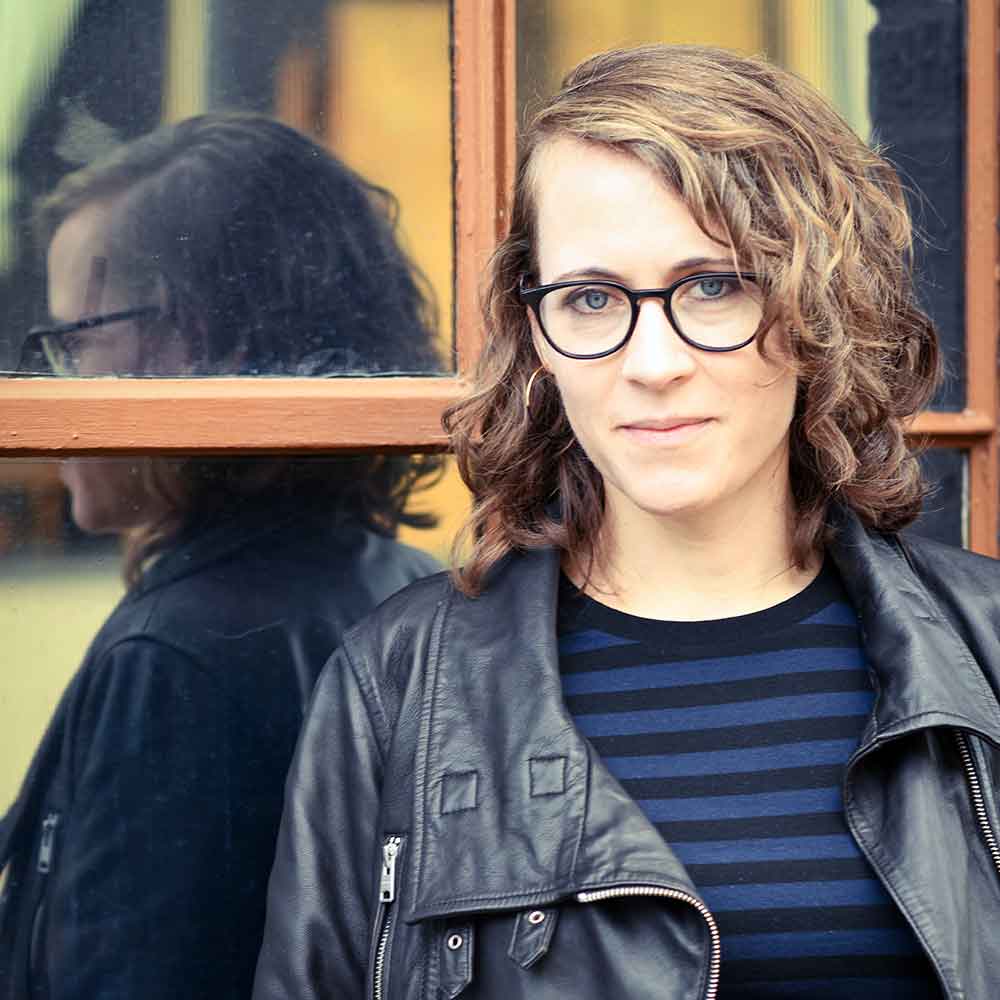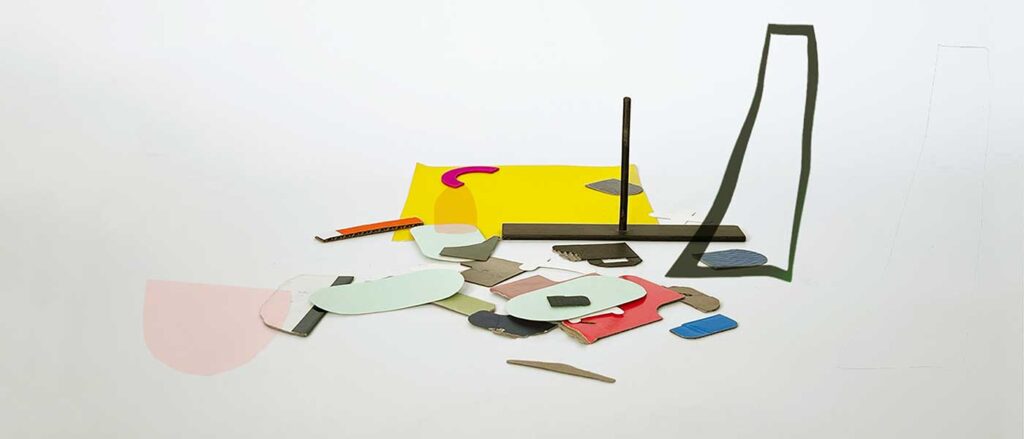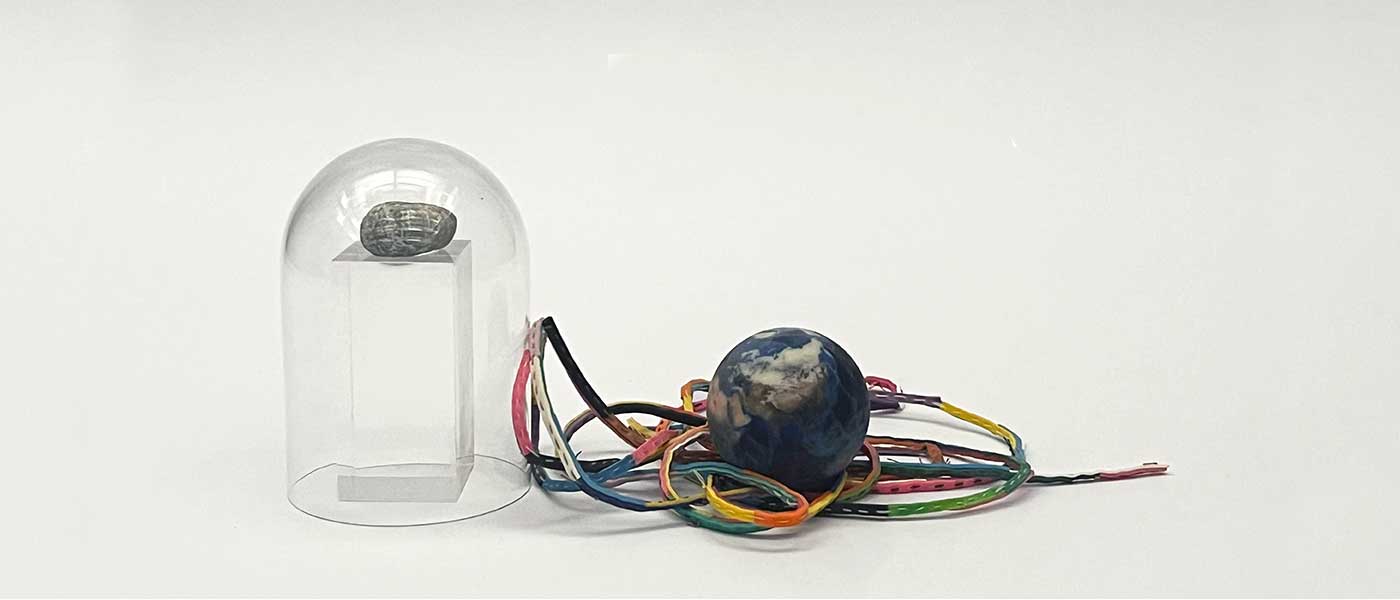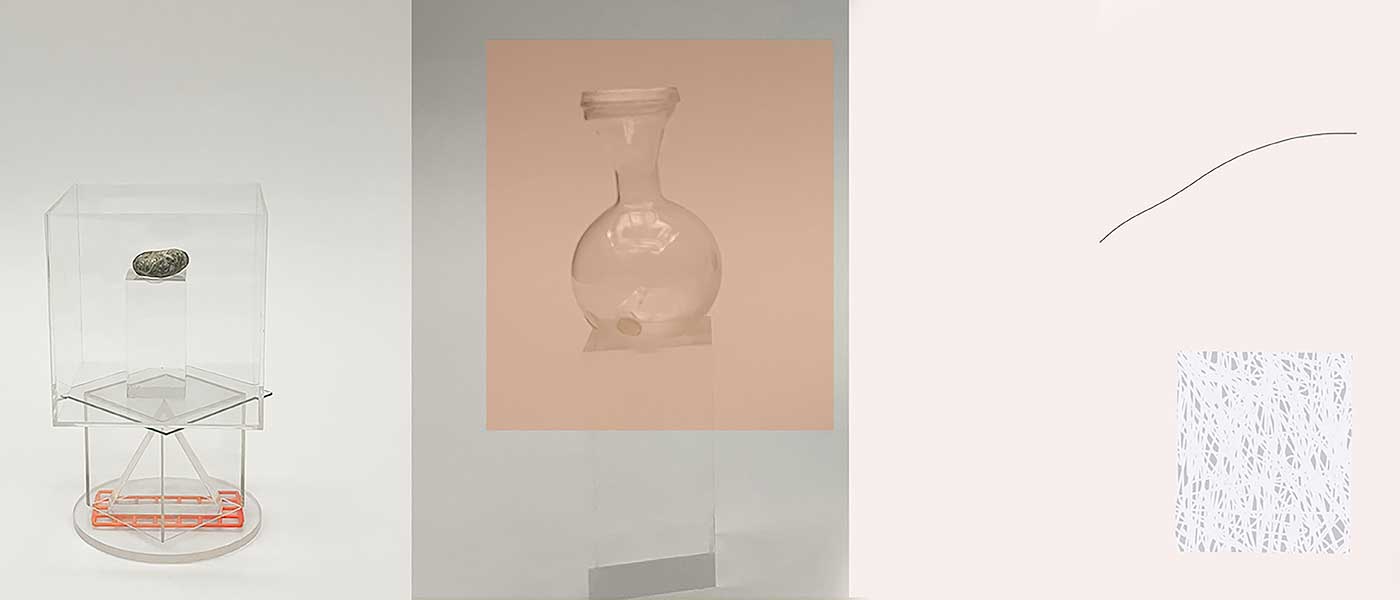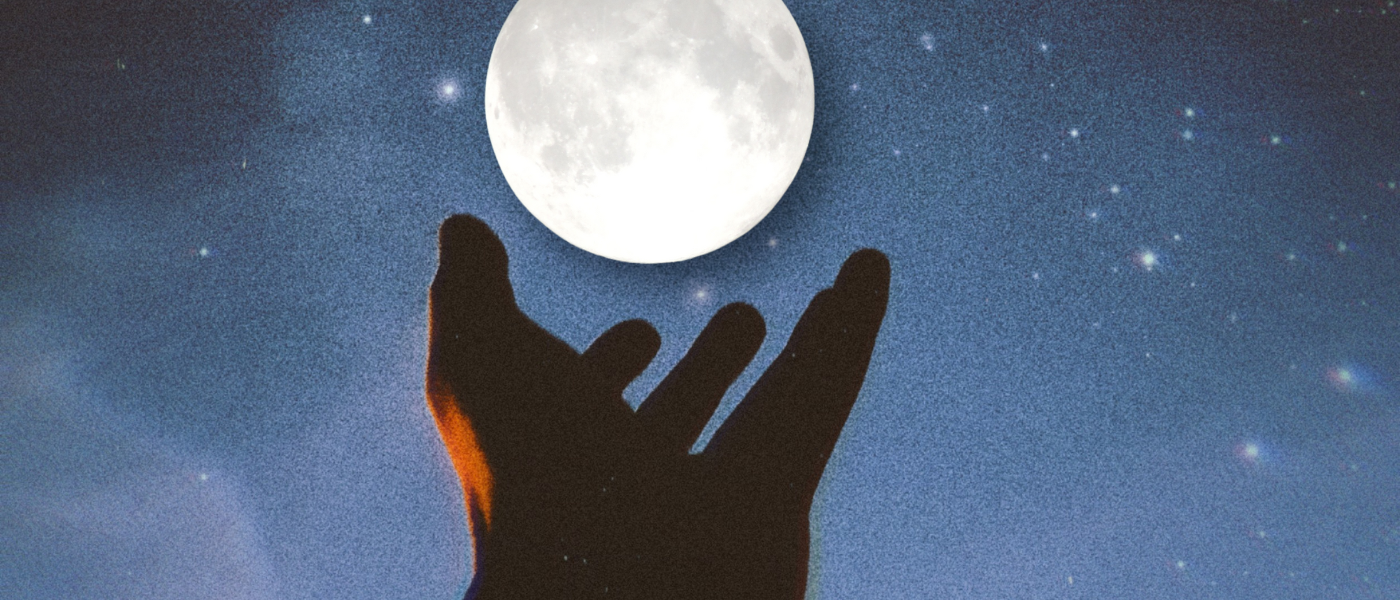I am often only aware of the way I remember things after realizing I have forgotten them: A friend’s birthday I catch just in time because it’s the day after Princess Diana died; The right turn I remember to make one block too late, when the sight of a familiar monkey puzzle tree reminds me I’ve gone too far; The fluttery feel of an ex-boyfriend’s lips crossing my face, evoked by the sight of a random passerby’s mustache; The memory of my mother’s voice, laced through the laughter of a woman standing behind me in line at the grocery store.
This inflection point between remembering and forgetting came to a head one morning when a banner flashed across the top of the Spotify app on my computer: Baby Girl is coming. Somewhere, from the depths of my brain, a response to this call floated back through my memory, in the form of rap lyrics: “Baby Girl, better known as Aaliyah.” As troubling as it was to think that the Spotify algorithm had correctly guessed what I wanted, I knew it was right: I was waiting for Aaliyah to come back; I had just forgotten.
I didn’t own any of Aaliyah’s three main albums back when she was alive and filling the mid-1990s airwaves with her particular blend of dark beats and ethereal falsetto—a sound likened to angels well before her death. But I still listened to her nonstop when I was in middle and high school; I often checked out her CDs from the library and silenced my friends whenever her videos popped up on MTV: “Shhh. It’s Aaliyah.”
The digital age as we know it began to emerge around the time she died in a plane crash in 2001; she was twenty-two years old, then, and I was eighteen. I had just entered my freshman year of college, and free-for-all music exchange platforms like Napster and Audiogalaxy quickly became the greatest perk of living in a dorm. The moment a song was released, or recommended to me, I could listen to it—an experience that had been unthinkable for most of my life. But as a white girl living in Boulder, Colorado, I quickly lost touch with R&B and hip hop. My new friends only kept current with whatever indie-rock bands passed through town; they were always reaching for the new, so that’s what I learned to fill my computer with. Only a handful of Aaliyah tracks stayed with me as I moved on.
Back then, I’d been able to easily locate her most popular singles (“Try Again” and “Are You That Somebody”) on Napster. But when I went in search of the older slow jam “The One I Gave My Heart To”, I kept finding mislabeled files; when I hit play, I was met with Monica’s “Angel of Mine” or Mariah Carey’s “When I Saw You” instead. Perhaps this is when I first began to forget. My old song files also didn’t last long after college and I changed computers. Given how carelessly I had acquired those thousands of songs, it had been just as easy to let go of them without sentiment. I can’t say when exactly they disappeared, though it was likely in the mid-2000s.
It wasn’t until I was building a nostalgic dance-party playlist for my bachelorette party in 2011 that I discovered a loss I wasn’t ready to part with: a search for Aaliyah’s tracks came up blank. At first, I thought I had misremembered my selected song titles or misspelled her name, but after scrolling through search results on iTunes without success, I turned to Google. Where is Aaliyah’s music? It turned out that her two most important albums—One in a Million (1996) and Aaliyah (2001)—had never transitioned to streaming platforms. What did this mean for my relationship with Aaliyah? I might have once called myself a fan, but realizing I’d allowed so much time to pass while being disconnected from her music called my relationship with it into question. That I had forgotten to remember her not only felt like a devastating testament to my own role in her disappearance from the world, but it also revealed the way someone once emotionally entrenched in my life could disappear before I even realized they were gone.
The year before my husband and I had a baby, I started repopulating my music library all over again, this time with an aim to cultivate something more permanent—I was middle-aged, with an increasing awareness of my own mortality, after all. As the world continued replacing what was once tangible with its digital counterparts, the urge to save filled my fingertips, and the desire to to flip through physical proof of my old self newly consumed me. I started frequenting music and bookstores more often; every few months I’d compile a handful of digital photos into a mail-order album.
Since finishing graduate school, I’d been working in education and exhibitions departments of art museums, whose focus on “preservation in perpetuity” took on an increasingly personal role in my life the older I became. Around the time that I became pregnant, I discovered a website that would compile and print my Instagram pictures into photo albums; and I encountered a story on NPR that described CDs as music’s most ephemeral medium, the tracks burned into their surfaces simply fading away over time. I imagined myself going through the hundreds of albums sitting on a shelf in my childhood basement, attempting to play them one by one, only to find myself met with silence. The very next day, I bought a record player, and shortly thereafter, an avocado-green shelf took center stage in our living room, which I began filling with vinyl LPs.
When Aaliyah suddenly reappeared in my life from within that Spotify banner, my chest throbbed the way it does whenever I witness a beloved musician taking the stage for the first time. I’d never seen the ad’s image of her before, so there was no foundation of nostalgia to compete with her newly-advertised radiance: her hair unbound in cascading waves, her hand clutching her heart beneath a metallic-gold camisole, her expression a mixture of joy and knowingness, as if she had a secret she was burning to tell. She looked so alive—and for less than a second, my longing was desperate enough to convince me that she was. Then, I almost laughed aloud. They mean her music is coming, obviously, I scolded myself.
While the banner informed me Aaliyah’s music would be streamable the very next day, my immediate question was: But will it be on vinyl? A quick Google search confirmed it would be, so I tracked down her two albums and hit “Pre-order.” As if having those records in my living room would somehow mean I could hold onto her forever. But that impulse opened up a bigger question—What did I want to hold onto, exactly? I didn’t even know what Aaliyah would sound like to me after twenty years of absence. Would a flood of memories surge through my body, suddenly unlocked by her warm vocals and those harsh beats—could I hope for a surround-sound-level emotional explosion? Or had Aaliyah been buried and disconnected from my life for too long to evoke any response at all?
Around the same time I started printing my Instagram albums, I started wondering where the family photographs in my father’s condo kept going. Similarly to the memory of my beloved Aaliyah tracks, I didn’t notice their disappearance at first; a steady influx of the new somehow always succeeded in distracting my attention away from the old. My dad had been replacing his décor with increasing vigor for a few years, since I’d left for college and he’d gotten remarried. I thought it was healthy to see change in moderation. I even liked coming back to my childhood home to discover new evidence of his second wife’s growing imprint on color schemes and furniture patterns. Rooms once coated in thick wallpaper were now refinished with fresh coats of warm yellow- and amber-colored paints, adorned with mirrors that reflected the light all around and made the house look new.
As I think back now, this time of many changes was likely when the picture of my mother first disappeared. It was the only one that I remember being on the mantle, among a random array of school portraits of my sister and me. My dad had framed that photo and given it to everyone around the time of her funeral, when I was nine—my mother was sitting on a bench in Disney World’s Main Street, her hair growing back during the brief moment when we thought the chemo was over, styled like Princess Diana’s. Truthfully, I hated that photograph because of how it had begun to replace all of my memories from the day it was taken.
In theory, I could understand why my father would want to remove it since every time I passed it, it sliced into me like a paper cut; I, too, wished it was gone. But at the same time, to remove it seemed as unthinkable as trying to imagine the return of our old life in that same living room, with my mom alive, reading a magazine on the couch, waiting for me after school; to lose the photograph would be to physically lose sight of the loss— an already-invisible process we were living through. To succumb to erasure would be to deny a meaningful vacancy. Soon, I began to second-guess myself: Was our house always like this—an impersonal space of forgetting? Maybe it was, and I hadn’t realized it because I was a kid, too alive in the moment to count the photographs, to take stock of the ways they filled a void in our home and in our lives.
Because my mother had been the family’s archivist, the rest of our photographs were labeled with our names and ages, and stored chronologically in the vinyl sleeves of albums that were stacked in a cabinet. All the photos that came after her death remained in the orange sleeves from the drugstore where they’d been developed; no one kept up the work. But I still loved looking at the albums. All the way through high school, I would frequently dig them up, eager to show them off to whoever would indulge me—family members, friends, and eventually boyfriends. I returned to these photos whenever I wanted to remember what my family used to be like, even though I had few words to describe the images inside.
But after my dad and his second wife separated, and he began living alone, the décor changeovers evolved into an almost-compulsive habit, as if he’d suddenly become more preoccupied with staging rooms rather than living inside of them. He downsized into a two-bedroom condo in 2014, and it became even more obvious; Every time I visited him, the table light would change. Over three years, the couch morphed from a tan corduroy to a chocolate velour to a midnight leather. A single painting of an aspen forest—dense, rosy-hued but entirely leafless—appeared in the living room. One of the only consistent décor details ran along a bookshelf in the spare bedroom: a parade of framed professional portraits of my sister and me from various stages of our existence. Many were familiar, but others that I hadn’t seen in decades—my second-grade school photo set against a backdrop of lasers, for instance—felt foreign and somewhat mysterious. Their sudden appearance made me wonder where he was keeping all the other archival objects and precious heirlooms that were no longer in sight.
In this way, I began to associate my visits to my father’s new home with some indescribable combination of nostalgia and loss. Among the many disappeared objects whose once-steady presence comforted me while growing up, several continued to haunt me each time I visited. I missed the antique brass lamp that was inherited from my great-aunt; the tufted gold armchair my father used to fall asleep in every night; the collage of tin sign advertisements that lined our kitchen walls—signs we had painstakingly hunted down amongst hundreds of vendor stalls at the Kane County Flea Market back when I was younger and my mom was still alive. We kept up the search for several years after she died, until they covered our kitchen like a painting salon and running out of space became an excuse to stop the tradition. The sudden absence of these objects, which had served as tangible memories in my adolescence, made me fear not only for my father’s emotional and mental wellbeing, but also for my own; My past was being erased. When I was a child, I didn’t worry about memories—particularly those of my family before my mother died. But I also didn’t know then that they could fade away, like the tracks on a CD that once felt so permanent.
Although I had lived nearly twenty years without Aaliyah’s music, I struggled to restrain myself during the mere twelve hours that separated my seeing the Spotify banner and the next morning, when her songs would be redownloaded into the cultural memory bank. After preordering the records, I turned to bootlegged music videos on YouTube in an attempt to satiate my urgent craving, including a grainy recording of “One in a Million.”
Before I could discern anything on my screen, I heard those familiar heartbeats: Ba-boom. Ba-boom. Love it, babe.
The first time I heard “One in a Million,” I was fourteen and hanging out in my best friend’s almost-finished basement, which had been made-over with a coat of clean white paint and plush beige carpeting, but furnished only with a television. For us teenagers, this was not an obstacle: the lack of furniture practically guaranteed our privacy, since no one else in her family would have wanted to spend time there due to the lack of comfortable seating. In addition to functioning as a place of solitude, this unfinished basement was a place of many firsts: our first real party (even if her parents were just upstairs), first game of spin the bottle (even if I didn’t kiss anyone except my best friend), and my first hand job lesson (even though I wasn’t giving any yet). No matter the occasion, we could always count on an endless stream of MTV countdowns to provide the soundtrack.
Ba-boom. In her video, Aaliyah appears in blinks and slices and fragments. Harsh bass, rising trills; Lush dark hair, a navel ring’s glimmer; Billows of smoke, a shining black convertible. Eventually the frame pans out enough to reveal the artist’s full iconic getup: a fitted pair of black, laced-up leather pants, , and a tiny laced-front top to match. Over the course of the video, the star reemerges in a number of different get-ups, including one with a mysterious silver-plated eye patch peeking through her dramatic swooping bangs, though she is always a vision with her narrow waist and glowing caramel skin. In the background, a loose narrative unravels involving a man and a motorcycle, with cameras and paparazzi flickering in and out of the shots. But if you are like me, you are too hypnotized by Aaliyah’s intense, unbroken gaze to really notice anything else.
Hearing those ba-booms now, as an adult, I suddenly recalled how they used to startle me when I was young—not the sound itself, but the realization of how much I liked this sound. How instantly I was drawn to this young woman, only a few years older than me at the time, whose intricate identity I could not fully grasp. As I watched Aaliyah flicker in and out the video frame, I also realized how uncomfortable she made me; I had never purchased her albums because I wasn’t comfortable owning them. Aaliyah—part alluring, part promiscuous, part unfathomably self-possessed—felt complicated in a way that I couldn’t understand.
I wasn’t fully aware of Aaliyah’s now-famous backstory as it was happening in real-time. I’d known she was romantically involved with the infamously debauched R&B singer and later-revealed sexual predator R. Kelly, but I had never followed the details of their relationship. I would come to learn years later that he produced her first album, Age Ain’t Nothing But a Number, in 1994; but if I ever realized they were married when she was only fifteen years old, the obvious connection between that album title and the bizarre details of their relationship still eluded me. They had all come to light well-before R. Kelly’s crimes were as openly discussed, but the media also didn’t use the same words back then—they actively avoided such necessary terms as “trauma,” “grooming,” “abuse,” and even “power.”
Once their marriage was over, Aaliyah never spoke of it publicly again; most people seemed to respond in the aftermath by forgetting the situation altogether. But I recognized something symbolic in the glimmering eye patch that she wore in her music videos and at award shows: a deliberate signal of something held back. It was as if she had left some dark and unknowable part of her self hidden in plain sight—something I now see as an aspect of her identity that complicated the brighter, performed narrative of a young woman simply moving on with her life.
As someone who was born and raised in the kind of suburbia where tidy, two-parent households appeared to be the norm, I learned that most nuclear families—including my own—rarely discussed the darker aspects of their lives. The thought of boldly displaying one’s own darkness like a self-afflicted scarlet letter was both alluring and terrifying. And yet, this was where I had felt my deepest, most instinctual connection to Aaliyah, which I had forgotten about entirely until her music resurfaced years later. Now, I’ve become more aware of the word people use to reference her persona most consistently: “mystery.”
“It was the mystery of Aaliyah that allowed the track to land so perfectly in the pocket for listeners…”
“She seemingly took the parts that felt the most like herself—the air of mystery, the laid-back vibes—and reworked them to help pioneer a new way forward in pop and R&B…”
“Twenty years after her death, Aaliyah is still a mystery…”
It was a mystery that could perhaps only be evoked in full by the music itself—a challenge that only a few true fans would undertake to parse out the meaning from the melody. I once heard New York Times culture critic Joe Coscarelli voice a certain fear about Aaliyah’s legacy, that she would ultimately become an “empty icon,” with her image usurping the complexities of her music, and by turns, her full being. While this was something he said before her music was re-released in 2021, I still share that fear to this day—that we could remember someone so tragically incompletely they’d become a ghost twice over. That we could gut their memory into a shell of itself without even realizing it, feeding false fuel into the machine of the collective consciousness.
The first time I visited my father after the pandemic, I walked into his extra bedroom and noticed the mélange of photos was gone.
“You’re probably wondering what happened to the dresser that used to be in here,” he said matter-of-factly, standing in the doorway.
“You mean the place where all of our family photos were displayed?”
“Yeah. I gave it to your sister for her new apartment.” He didn’t say anything specifically about the photos. I’d wanted to press the issue, but it had been over a year since I’d last seen him, and I’d just arrived, after all. It seemed like too much to ask.
Later that evening, while my dad was at the grocery store, I quietly approached a plastic crate I’d noticed on the floor, where the dresser with the photos used to be. I opened it delicately, as if it might fall apart, even though it appeared brand new. I’d been expecting to find the old, framed photos that had been relegated to my memories, but instead I stared into a pile of albums I didn’t recognize. As I opened a faded red leather-bound book on top of the pile, a photo flew out. I immediately looked around to make sure my father hadn’t returned before moving to retrieve it. The photo turned out to be a black and white shot of a couple and their bowl-cut styled toddler, all clad in long, wool coats, in front of a Ford Model T. As I flipped through the images in the rest of the book, I determined the boy must have been my mother’s father, and that these antiquated albums must have ended up with my dad after my maternal grandmother died while I was in college. At the end of the album, an index handwritten in blue ink gave me pause:
Page 3: My Favorite of Gordon. Florida house, 1918.
Page 4: First day with Gordon’s bicycle, 1922.
Page 5: Etta in my arms, Gordon beside us, 1922.
The captions were brief, but held enough personality within them that I could almost hear the voice of the woman who wrote them—my great-grandmother, who I know almost nothing about beyond her apparent passion and diligence for archiving. The impulse to chronicle these photos beyond simply storing them away echoed my mother’s own meticulous labeling system. Standing there in the empty bedroom, I briefly considered that not everyone would have this same desire to record the details of any given moment as a means of preserving them for the next person who would come looking. I considered, too, that maybe I was being too hard on my dad: for some people, the details of what’s been lost are just too hard to look at.
The reason behind the disappearance of Aaliyah’s most important albums is indeed intertwined with the question of remembering—but more specifically, with the pain of remembering. The young artist’s uncle, Barry Hankerson, was the co-founder of the boutique label Blackground Records, which released One in a Million and Aaliyah back in 1996 and 2001 respectively, and still owns their copyrights to this day. Hankerson had also been Aaliyah’s manager, beginning from when she was only ten years old. It was Hankerson who first introduced her to R. Kelly when she was twelve and facilitated their collaboration on Age Ain’t Nothing But a Number, and he was reportedly furious when he learned of the marriage that took place between them not long after. But probable rumors have since emerged that might suggest otherwise—that Hankerson in fact suspected something was amiss well before the marriage was made public, since he had been managing Kelly for ten years by then, and had heard firsthand about multiple accusations of abuse from other young women in Kelly’s orbit.
The story then goes that Aaliyah’s family was understandably devastated by her untimely death less than a decade later. Some of them couldn’t bear to walk into a public place and suddenly hear her voice, and Hankerson himself was supposedly too broken up about his niece’s passing to continue managing the albums he held the copyrights to. If the stories are to be believed, around one year later, Hankerson was the person who anonymously sent a video of R. Kelly urinating into the mouth of a young woman to a journalist, having finally come to terms with the harsh realities of Kelly’s crimes, and perhaps even with his own role in allowing them to continue for as long as they did. It was the first crucial bit of evidence to begin reshaping public perceptions of Kelly more broadly.
Some ten years later, as music began moving increasingly into the digital space, there were rumors of almost-agreements, hushed deals, and unreleased Aaliyah tracks surfacing in the streaming world, but they always managed to fall through, and so her two main albums became increasingly harder to come by. While most of us don’t know exactly why Aaliyah’s albums remained locked away for so long, the combined traumas of her life and death seem like undeniable factors. The sheer suddenness and unexpectedness of her passing, combined with the strengthening whispers of her abuse in the face of increasing allegations against R. Kelly (and their subsequent media coverage) may have been too much to bear for some of those involved. Maybe turning away from the grief and guilt incurred by these memories felt like the only option, even for what seems like the ultimate price of compromising the young star’s legacy and life’s work—letting the facts of her existence and the public’s memories of them fade in tandem from existence.
A few hours after I discovered my great-grandmother’s photo album, my father sipped a modestly-sized glass of white wine over dinner. I tried gently (but persistently) raising a slew of family questions every time the conversation cracked a window in that direction, but no single exchange lasted longer than a handful of minutes. My father’s work at the steel mill (“pure hell”); My grandparents’ experiences with the Depression (“no one leaves that unchanged”); The layout of his tiny childhood home just south of Chicago (“The kitchen was our bedroom”). Eventually, I decided to give it a rest and wait until he was ready to say more—to allow me a glimpse of the darkness that helped shape our family history. Some things were simply worth waiting for, after all.
When Aaliyah’s albums finally arrived at my home months later, I waited for an afternoon when I knew I’d have the living room to myself to listen to them. Alone, I turned up the bass on the stereo as my younger self would have, sprawled out on our couch, and watched the needle drift onto the black vinyl’s first ridge. As the space slowly filled with the ticking gong that opens One in a Million, I lost myself—not within the memories of my youth, as I had expected, but within the immediate fullness of the record’s sound. I’d read somewhere that when a song is compressed into an MP3 file, the sonic elements that your ear supposedly cannot hear are eliminated in the interest of saving space. Experts claim that such an absence would be impossible to detect, but as the richness of Baby Girl’s highs and lows floated through my ears and seeped into my hippocampus, my breath shortened, my chest tightened, and I knew that they were wrong—that sometimes absence is the loudest sound in the room.
